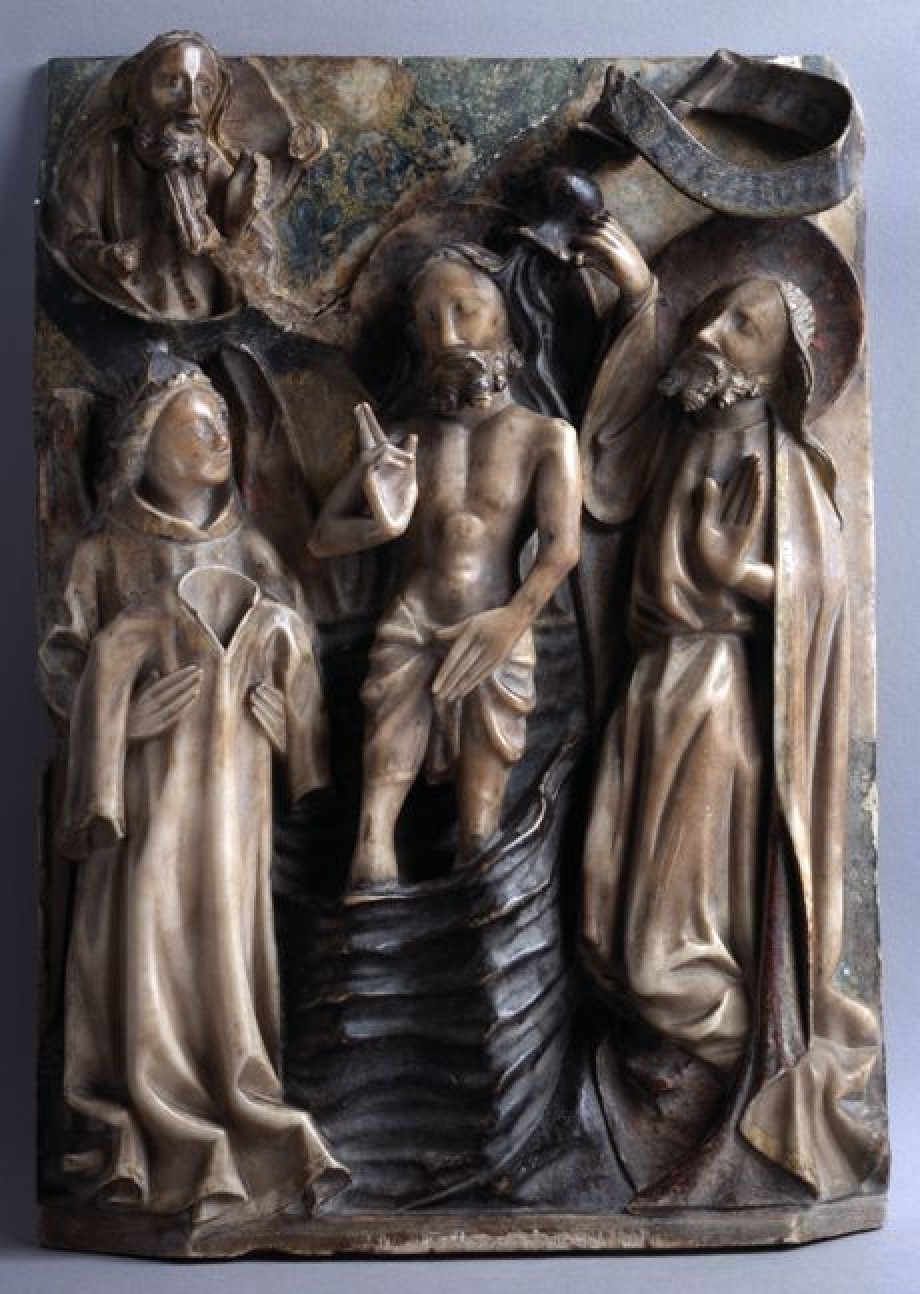The Coronation of the Virgin

Artist / maker
Anonieme meester (sculptors)Date
1400 - 1499Period
15th centuryCollection
Museum of Fine Arts Ghent
These two reliefs, The Baptism of Christ and The Coronation of the Virgin, originally come from England. Both works used to be part of an alabaster altarpiece. The alabaster quarries in the Midlands were exploited intensively as early as the fourteenth century. Nottingham was the most important centre for the production of statues and altarpieces. From the fifteenth century onwards…
Read more
These two reliefs, The Baptism of Christ and The Coronation of the Virgin, originally come from England. Both works used to be part of an alabaster altarpiece. The alabaster quarries in the Midlands were exploited intensively as early as the fourteenth century. Nottingham was the most important centre for the production of statues and altarpieces. From the fifteenth century onwards this precious material was also increasingly used in the rest of Europe. The Holy Trinity – God the Father, the Son and the Holy Spirit – was a favourite theme in English alabaster works as well as in narrative portrayals such as The Baptism of Christ and the Coronation of the Virgin. Father and Son crown the Virgin with a triple crown above which the Holy Ghost descends in the form of a dove. The story of the crowning of Mary came into being in the early centuries of Christianity. No mention is made of it in the original gospels. The portrayal of The Baptism of Christ is based on the gospel of Mark. God the Father in heaven pronounces Christ his dearly beloved Son. Formerly, the Holy Spirit could also be seen next to Him in the form of a dove. The style and way the two reliefs present the subject are reminiscent of Byzantine and Roman art.
Read less











